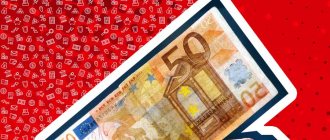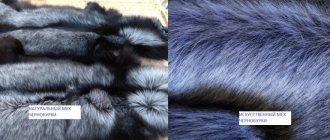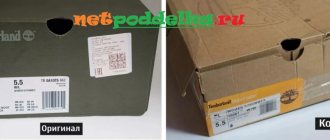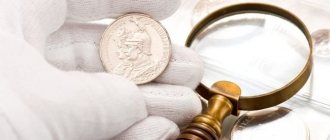Banknotes with a face value of 100 euros are popular among citizens of Russia and neighboring countries who prefer to keep their savings in EU currency. But experts warn that counterfeit banknotes are often found among such money.
It is not difficult to distinguish genuine 100 euros from a fake if you know what security features and special features the bills issued by the European Central Bank (ECB) have.
The 100 euro banknote is often counterfeited.
Features of the design of euro banknotes
Before checking 100 euros for authenticity, you need to understand what EU money looks like.
Throughout the existence of the currency, the ECB has issued 2 series of it:
- «2002»;
- "Europe" (2013).
Money of both series circulates throughout the EU, there are 7 banknote denominations in total: 5, 10, 20, 50, 100, 200 and 500 €. Banknotes of each denomination differ in size and color (see table).
| Currency denomination | Main color | Size(mm) |
| 5 | grey | 120x62 |
| 10 | red-orange | 127x67 |
| 20 | blue | 133x72 |
| 50 | orange | 140x77 |
| 100 | green | 147x82 (old bills), 147x77 (new) |
| 200 | yellow-brown | 153x82 (old), 153x77 (new) |
| 500 | purple | 160x82 |
The design of the banknotes reflects 7 European architectural styles that were characteristic of the historical development of the Eurozone countries:
- antiquity;
- romance;
- gothic;
- Renaissance;
- Baroque and Rococo;
- industrial era;
- modern
The front side of the banknotes is decorated with windows and gates, symbolizing cooperation and openness, and 12 stars of the European Union, symbolizing the dynamic development and harmony of a united Europe.
Bridges are drawn on the reverse side of euro banknotes of all denominations. They point to the freedom of communication of European peoples with each other and with the rest of the world. This side also contains a map of Europe.
The design of the money is complemented by the name of the currency printed on each bill in 2 languages: Greek (EYRO) and Latin (EURO). The 100 and 200 € banknotes issued after 2022 feature the name of the currency in Cyrillic.
What types of Euro coins are there?
Today there are eight coins in circulation. Six of them are eurocent change coins, something like our kopecks. Although the coins are minted in different countries and in different designs, the entire coin series has common elements:
- European map and denomination figure against its background;
- 12 stars each on the reverse and obverse (and on the reverse they are connected by straight lines);
- single font;
- sketchiness in the image.
The reverse design of coins has its own philosophy. Their appearance is slightly different:
- The 1, 2 and 5 euro cents feature a globe depicting where exactly Europe is located in the world;
- 10, 20 and 50 euro cents show fragmented EU member states that are just about to unite into a single “organism”;
- 1 and 2 euros show a common map of Europe, as a united territory without clear boundaries and barriers.
| Image | Name |
| 2 Euro | |
| 1 Euro | |
| 50 Eurocents | |
| 20 Eurocents | |
| 10 Euro cents | |
| 5 Eurocents | |
| 2 Euro cents | |
| 1 Eurocent |
Countries do not have the right to change the reverse design in their own interests. Only the obverse, the “national side,” is left to the mints. They are free to do whatever they want with it, there is only one rule: they must keep 12 stars on the outer ring.
Features of stamping in different countries
Each Eurozone country has the right to create unique coins. They will always have a different obverse (the so-called national side), making it easy to identify where exactly a particular piece was produced. Each option always has 12 stars, most often they are located in a circle. But the rest of the content can vary greatly.
On the national side, each country's mint depicts something different. There are 23 obverse options (interestingly, euro coins are issued by countries such as Andorra, Monaco, Vatican City and San Marino, although they are not members of the European Union).
In addition, some countries may issue several types of the same coins - for example, Belgium created as many as four varieties of 1 euro between 1999 and 2014.
Coins with different national sides can only be minted in a specific country. But they will be accepted throughout the European Union - you can easily pay with German coins in Portugal, and with Austrian coins somewhere in Finland, and so on.
Euro cents
In the European Union you can find small change coins in denominations of 1, 2, 5, 10, 20 and 50 euro cents. The first three are cast from steel, and their covering is made from copper. That's why they appear red. Some even call them coppers because of this. The edge of these coins is smooth, only 2 euro cents have a groove along the entire diameter.
Denominations from 10 to 50 euro cents are made of Scandinavian gold - a special copper alloy with the addition of aluminum, zinc and tin, which received its noble name for its golden hue. It is impossible to confuse them with real gold coins. As for the edge, the 10 and 50 euro cents have a ribbed edge. And 20 euro cents have a unique feature - the so-called Spanish flower: seven dents across equal diameter segments.
1 and 2 Euro
These two coins are bimetallic - they have a center and an outer circle with twelve stars on duty. The 1 euro coin has a yellow outer circle, while the 2 euro coin has a white outer circle.
Among the 2 euros, the most common are commemorative and anniversary coins - this denomination is used to create such money for collectors - there are more than 300 varieties in total.
The edge of the 1 euro coin is divided into six alternating segments. Three of them are perfectly smooth, three are finely ribbed. But for 2 euros everything is much more interesting. There is always an inscription on the finely ribbed edge, the content of which differs depending on the country that minted the coin. For example, a German coin has the first line of the national anthem written on the edge (EINIGKEIT UND RECHT UND FREIHEIT) with a large dot at the end. And the Dutch version contains the inscription “God is with us”, interrupted by stars (GOD ★ ZIJ ★ MET ★ ONS ★).
Anniversary and commemorative coins
As a rule, the denomination of 2 euros is used to create commemorative coins. As of March 2022, the European Union has released 309 varieties. Each country has the right to produce its own unique “souvenirs”, which depict some significant event for it - for example, the Finnish “100 Years of Independence”. The European Union also publishes general series on one topic, uniting all states.
“Souvenirs” are, of course, legal tender. But, since they have a collectible value and were originally sold in banks, no one uses them for their intended purpose as currency. But they should not be confused with commemorative coins made of precious metals.
Over the entire existence of the European Union, four “general” series have been released:
- Treaty of Rome (2007, 13 coins);
- 10 years of Economic and Monetary Union (2009, 16 coins);
- 10 years euro (2012, 17 coins);
- 30th anniversary of the European flag (2015, 19 coins).
| Image | Name |
| Treaty of Rome | |
| 10 years of Economic and Monetary Union | |
| 10 years euro | |
| 30 years of the European flag |
In addition, countries are free to issue entire series of commemorative coins. For example, Germany was concerned with creating the “German Federal States” line, consisting of 16 coins. And Spain is releasing a series of “UNESCO Cultural and Natural World Heritage Sites”.
There is also a 5 euro coin. It is considered legal tender, but only in the country that issued it. Most often it does not go into circulation, but is used as a collection item.
Ways to determine the authenticity of a banknote
To check a suspicious bill, it is not at all necessary to go to the bank. Knowing what methods of protection Europeans provided their banknotes with, you can distinguish counterfeit 100 € from genuine ones at home.
By external signs
The €100 banknote features green designs of a doorway and a bridge, which are in keeping with the Rococo and Baroque styles. The color of the old banknote is less saturated than the “Europe” series.
All drawings present on the euro must have clear and smooth lines. If the images are blurred or their outlines are interrupted, then the authenticity of the money should be doubted.
The authentic 100 € notes from both series are marked with:
- denomination;
- name of the currency;
- 12 stars and the flag of the European Union;
- abbreviation EBC in 5 languages;
- signature of the President of the ECB;
- protective hologram;
- serial number;
- year of issue.
Euro banknotes series “Europe”.
To the touch
To determine the authenticity of money, it is not enough to know what it looks like.
It will be possible to detect a counterfeit using tactile sensations if you slightly wrinkle the euro banknote. Banknotes are printed on special currency paper to make counterfeiting more difficult. The European banknote has a cotton base with added impurities. This composition makes the bills strong and thin. Fake euros feel thicker to the touch than genuine ones.
Real euros will “sound” if you crush them. We do not recommend damaging banknotes. Bend the bill slightly and hear a characteristic crunch. If you shake the euro, a ringing rustle will be heard. Such a money melody cannot be heard from fakes, they are soft.
The paper on which the ECB issues money is made from pure cotton. It is dense and rough to the touch, crunches in your hands and bends well.
Thanks to a special type of printing, some image elements on the front side of the banknote have increased relief, making it possible to recognize the denomination, individual fragments of the doorway and the row with the ECB abbreviation by touch. The serial number is embossed on the back side.
If you have doubts about the authenticity of the banknote, run your fingertips across the surface. Check:
- Abbreviation of the European Central Bank (ECB), written in several languages;
- Main drawing (windows or gates);
- Large denomination on the left side;
- Sign ©;
- Year of issue.
If you feel any bulges, these are genuine banknotes.
The fake looks smooth.
Do you know how to identify the authenticity of euros?
Not really
Printing method
The use of various modern printing techniques in the production of paper money makes it possible to achieve an image that has various features. The following printing methods are used to print European currency:
Metallography
A method of deeply pressing ink into paper under high pressure, previously applied in the desired places of the printing plate. In this case, the pressed ink forms a relief on both sides of the bill. Easily detected by touching or viewing under magnification. Down to the smallest strokes, metallographic elements are distinguished by excellent clarity. When using multi-color metallography, color changes without overlaps, shifts or breaks. To protect the euro, metallography was used with an effect called “Orlovsky”.
Oryol seal
A complex and costly method that involves applying new ink to the printing plate for each cycle. The Oryol method is used only for especially valuable securities and banknotes with a high level of security. Recognized by the absence of overlaps and breaks at the junctions of differently colored elements. Requires high-precision, sophisticated printing equipment. In euro banknotes, the Oryol seal is applied to the front side of the banknote.
Iris peal
The iris effect is understood as a smooth color transition along one side of the bill. Tears and displacements, just like in the Oryol seal, are not allowed. The boundaries of the gradient transition are not clearly defined and may have slight deviations for different banknotes. The euro note has an iris effect on both sides of the paper.
Into the light
When you hold a Eurobanknote up to a light source, additional security elements should appear on it:
Watermark
It appears on both sides of the bill, duplicating its denomination and the image of architectural structures. The banknote is unevenly dense. It is thinner where the watermarks are applied. Therefore, when checking, the bill is held against the light. The euro has three watermarks:
- repetition of the main image of the front side of the banknote;
- denomination;
- machine-readable barcode - rows of vertical dark and light stripes. The size of the stripes and the distance between them are individual for each denomination.
What to do with 50 euro bills?
The old 50 euro notes remain valid, but gradually, step by step, they will be withdrawn from circulation. In addition, in state banks of the Eurozone countries they can be exchanged for new banknotes at any time.
Interesting materials:
How to sign a contract for Sberbank Ast 2022? How can a customer sign a contract for Sberbank Ast? How to confirm a Sberbank payment without SMS? How to confirm a payment in the Sberbank contact center? How will Alfa Bank repay the loan? How to repay a home loan through Sberbank Online? How to repay a loan from MTS Bank? How to repay an installment plan through Sberbank Online? How to deposit dollars into a Sberbank brokerage account? How to change the PIN code of the post office bank?
Under a magnifying glass
The €100 banknote has microtext that can be viewed under a magnifying glass with 10x magnification. It is on the word EYRO (the Greek name for the currency) and an image of architectural structures.
On top of the protective tape, microtext - the word “EURO” and the denomination of the banknote. This is not the only microtext that appears on the euro. For example, on the front of each banknote, within the text “EURO ΕΥΡΩ”, rows of numbers indicating the denomination are printed diagonally. Each microtext has a specific place depending on the denomination of the bill.
Study the microtexts carefully. Letters and numbers should stand out sharply and clearly. It is difficult to fake a microfont. On counterfeit banknotes, the letters appear smeared and blurred.
European banknotes are protected by micro-images - polygons and grids with ultra-fine edges. Like microtext, they are viewed at close proximity.
Areas of the banknote with a micropattern have anti-scanner properties: when scanning a genuine banknote, a distorted image is obtained. Experts call this effect “moire.”
New euro banknotes
Very soon, namely on November 25, 2015, in addition to the new 5 and 10 euro banknotes, an updated 20 euro banknote will go into circulation. As Mario Draghi, who holds the post of head of the ECB, assured the public, the new banknote is a real breakthrough in the fight against organized counterfeiting of the sought-after world currency. The work on the 20 euro banknote was not done by chance, since it is considered not only the most frequently used in the world, but also the most sought after among counterfeiters. Official statistics confirm this fact. Approximately 30% of counterfeit euro banknotes found in Germany are 20 euro notes.
Advice from Sravni.ru:
The Euro is the second most popular currency in the CIS. It is considered a popular reserve instrument, as well as a good tool for preserving and protecting capital from inflation. Financial experts often advise diversifying deposits opened in Russian and foreign banks according to the principle of 30% in rubles, 30% in dollars and 30% in euros.
Ultraviolet
If possible, the suspicious bill should be tested under ultraviolet light. The main difference between banknote paper and regular paper is the absence of background glow in ultraviolet light.
Look at an authentic banknote. She appears black. Now check the paper. In ultraviolet light it will glow with bright blue light. Ultraviolet light is not easy to fake. An attentive eye will immediately notice the false light, even if they tried to dim it with special reagents.
Colorless fibers are embedded in the paper. Their glow is visible only in ultraviolet light. You will immediately notice red, blue and green hairs. Pay special attention to fiber inspection. When trying to reproduce protective fibers, a modern analogue of phosphorus is used - phosphor. Don't rely on one-step verification. Check out other euro safety features.
Euro paper should not glow in ultraviolet light, but colorless fibers, on the contrary, will appear. But these are not all the changes that will appear in ultraviolet light:
- The blue flag of the European Union, located in the upper left corner of the euro banknote, has turned green.
- Blue, green and red fibrous particles appeared on the banknote, which cannot be seen with the naked eye.
- The color of the EBU chairman's signature will change to green.
- On the front side, on the right side, where the doorway is drawn, 12 stars of the European Union became visible. Their brightness gradually decreases: while the first star can be clearly seen, the last one is almost invisible.
- Glowing lines appeared next to the stars.
- Both the right and left sides of the drawings must be completely consistent.
- The drawing of the bridge and the outline of the map of Europe on the back turn green.
When viewed under ultraviolet light, the banknote in the upper left corner changes color to the flag.
When checking euros, keep in mind that light green paint is more often counterfeited.
Banknote verification detector
A reliable way to make sure that a banknote is not counterfeit is to shine it through the detector that bank employees use to check money.
Most of the images on the front side of the euro are applied with IR metameric paints. Their peculiarity is their inability to reflect infrared rays. If the bill is genuine, then when placed in the detector, its left side will become invisible.
View of the original through a banknote detector.
IR tags
In the infrared spectrum, the banknote will appear white, except for those elements that are applied with special paint. They are called IR tags. We have already tested these same elements for magnetic properties:
- right side of the main image;
- hologram;
- top serial number;
- denomination numbers on the back;
- security thread.
Didn't find these signs of authenticity? Euros are fake.
IR protection is the most reliable so far. Checking the authenticity of the euro necessarily includes checking it with an IR detector.
Basic protection elements
Technological protection of banknotes of any currency is understood as a complex of visually or tactually detectable elements applied using special technologies during the manufacture of paper or its design. Conventionally, it can be divided into two large groups - printing protection and the use of physical and chemical components.
Printing protection should be understood as all specific techniques and changes made at the stage of printing. This includes the printing method itself, a set of graphic elements, micro-perforation, background mesh, security thread, matching parts, relief elements, microtext, etc.
Physico-chemical methods of protection involve the use of special additives in the composition of the materials used, which manifest themselves under certain conditions - luminescent and infrared glow, metameric effect, magnetic elements, etc. As a rule, the identification of these signs of authenticity requires the use of special instruments.
The main signs of the authenticity of a banknote
In addition to the signs listed above, the following methods will help you distinguish genuine 100 euros from a fake:
At an angle
Look at the digital designation from different angles. On the back of old-style banknotes it is colored purple. When you turn the bill, the numbers turn black. On the new 100€ note, the visual effect can be seen by looking at the denomination indicated in the lower left part of the front side.
At a right angle, the number 100 appears green; at an angle, it appears blue. A change in color display can be achieved through the use of a special iridescent paint, which is difficult to fake.
Making iridescent paint is very problematic, so this aspect should be paid attention to first.
High denomination banknotes (€50, €100, €200 and €500) feature a hologram on the front. As the position of the bill changes, the pattern on the hologram also changes. Take a closer look and notice how the denomination numbers turn into windows (or gates). This is an extremely difficult defense to imitate. By its execution it is easy to establish the authenticity of the euro.
Microscopic holes stand out against the light on the hologram, forming the “€” symbol. This is another protective feature - microperforation. The holes are made with a laser, so you don't feel them to the touch.
The denomination and the word “EURO ΕΥΡΩ” are printed on the hologram in the tiniest of microfonts. Counterfeiters reproduce it with gross violation of microprinting. Please note that no counterfeits of high-quality holograms (except for €200) have yet been discovered.
Were your expectations met?
Representatives of the ECB have repeatedly explained to journalists that the introduction of new banknotes with an enhanced degree of security will reduce the amount of counterfeit money. Were your expectations met?
According to the financial institution, during the first 6 months of using the “Europe” series, a total of 251 thousand counterfeits were identified and seized. 8 out of 10 – denominations of 20 and 50 euros. Counterfeiting of €100 banknotes has decreased significantly. It accounted for about 10% of the detected counterfeit money.
The number of counterfeits in general is also decreasing – by an average of 17% per year. Financiers attribute this to the reliable protection of banknotes. This means that all measures are not in vain.
Serial number
Check the serial number of the bill located on the back of it. It consists of a letter of the Latin alphabet and 11 numbers.
On EU money, the letters are always smaller than the numbers.
Sum up all the numbers on the euro banknote identifier, and then add to the result the serial number of the letter in the alphabet - if the 100 euros are genuine, issued by the ECB, then you should get 8. As an example, you can take the number S13136902855. Adding all the numbers, we get 43 (1 + 3 + 1 + 3 + 6 + 9 + 0 + 2 + 8 + 5 + 5 = 43).
Each letter has a corresponding code - check digit . On a genuine banknote, the sum of the digits of the serial number and the check digit are the same. After this, we add to the result the serial number of the letter S, equal to 19: 43 + 19 = 62. We sum up 6 and 2, we get 8. This number indicates the authenticity of the bill.
| Serial number letters in the alphabet | Letter code | A country | Check digit |
| 4 | D | Estonia | 4 |
| 5 | E | Slovakia | 3 |
| 6 | F | Malta | 2 |
| 7 | G | Cyprus | 1 |
| 8 | H | Slovenia | 9 |
| 10 | J | Great Britain | 7 |
| 11 | K | Sweden | 6 |
| 12 | L | Finland | 5 |
| 13 | M | Portugal | 4 |
| 14 | N | Austria | 3 |
| 16 | P | Netherlands | 1 |
| 18 | R | Luxembourg | 8 |
| 19 | S | Italy | 7 |
| 20 | T | Ireland | 6 |
| 21 | U | France | 5 |
| 22 | V | Spain | 4 |
| 23 | W | Denmark | 3 |
| 24 | X | Germany | 2 |
| 25 | Y | Greece | 1 |
| 26 | Z | Belgium | 9 |
There are many ways to distinguish 100 euros from a fake. But no matter what security methods the money is equipped with, counterfeiters are constantly improving their skills and finding new opportunities to counterfeit banknotes.
To avoid becoming the owner of counterfeit currency, you should only purchase it from a bank. People who buy euros secondhand run the risk of getting a counterfeit.
Popularity
The most popular and widespread currency in the world is still the dollar. But this does not mean that almost no one uses the euro. For more than 340 million European citizens it is a common currency.
| Index | Quantity |
| How many banknotes in the form of cash (at the beginning of 2022) | 24057232839 pieces |
| Total money supply of banknotes (at the beginning of 2022) | €1292742470730 |
| What is the average support in the European Union? | 62%, according to Standard Eurobarometer for November 2022 |
| Which European country is least supportive of the euro (in November 2022, according to Standard Eurobarometer) | Czech Republic, 21% supporting |
| Countries most supportive of the euro (same period, according to a similar source) | Slovenia, 86%, Luxembourg and Estonia, 85% |
According to SWIFT information for October 2022, 37.82% of money transfers were carried out in euros. This is 6% more than in 2022 over the same period of time. According to the Eurasian Development Bank, the share of the euro in the Russian Federation’s settlements with other states within the EAEU in 2022 is still 7.8% for exports, but increased from 2.7 to 2.9% for imports.
Photos of euro banknotes of different denominations can easily be found on the Internet. For the most part, they give an idea of what real money looks like, although there may be obvious photoshopped images. In any case, it is unlikely that the bank will issue a counterfeit bill during an exchange. It is also unlikely to receive counterfeit money in the form of change in a store. But there is no such thing as too much vigilance.











